
March 08, 2018 4 min read 3 Comments
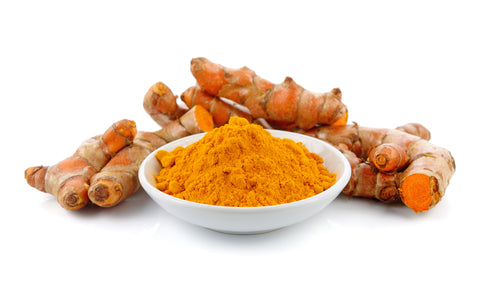
Turmeric is an ancient spice that has become very popular with people interested in healthy eating and is definitely considered a 'superfood'. For many centuries and everywhere it has been consumed it has been celebrated for its flavor, its nutritional value as well as its medicinal properties (anti-inflammatory / anti-bacterial / anti-oxidant). With active ingredient Curcumin- the healing element that also gives Turmeric its vibrant gold/yellow color- it has become a dietary fixture for many now as a healthy supplement, for medicinal purposes, as a garnish, and as an ingredient.
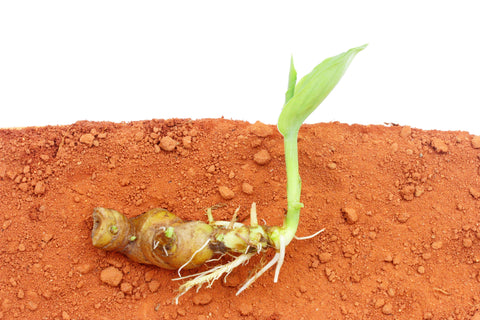
About the Turmeric Plant
Its botanical name is Curcuma longa, and the plant itself reaches barely three feet high, producing a flower and a rhizome (root-like stem) that is found in the soil. The rhizome looks very similar to ginger roots. It is this root-like stem that produces the gold/yellow Turmeric spice. While Turmeric can now be found growing in many places around the world (particularly the tropics), India has always been the largest producer of Turmeric- dating far back to ancient times.
While the rhizome/root-like stem is what the plant is known for, all parts of the Turmeric plant are edible – including the leaves (a.ka. Haldi leaves) and flowers.
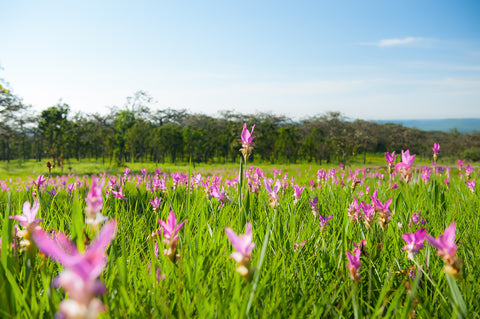
History:
Scientific analysis of a pot shard discovered in a small city northwest of New Delhi, India evidenced Turmeric, Ginger and Garlic residue that dates back as early as 2500 BCE- making this spice at least 4,500 years old! It wasn't until about 500 BCE that turmeric emerged as an important part of Ayurvedic medicine (ancient Indian system of natural healing, still practiced today).
This natural approach included inhaling fumes from burning turmeric which was said to alleviate congestion. Turmeric juice was believed to aid with the healing of cuts and even bruises. Turmeric paste was applied to all sorts of skin conditions – from smallpox and chickenpox to acne and shingles. Ayurvedic literature contains over 100 different terms for Turmeric, such as Jayanti, meaning “one who is victorious over diseases”.
Evidence of Turmeric being used in the West appears first in 1747 (Hannah Glasse’s cookbook, The Art of Cookery Made Plain and Easy). In the US, some of the earliest evidence appears in 1831 (Mrs. Mary Randolph’s Virginia Housewife cookbook).
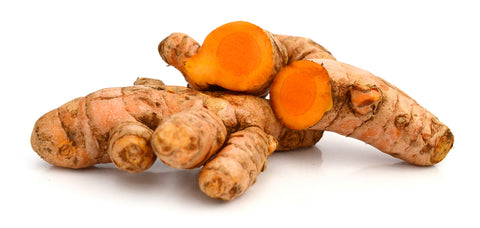
Health/Medicinal Benefits
The main active ingredients in Turmeric- Curcumin, and Tumerones- have since been shown by science to validate many of those early Ayurvedic practices, and has added many more. Curcumin seems to be the component that most studies recognize as having the most significant impact, but it is not entirely clear yet. Curcumin has significant anti-inflammatory properties, and scientific studies have pointed to Turmeric even rivaling Ibuprofen in effectiveness (see study). For example, there are studies on how Turmeric can discernibly and positively impact even joint arthritis (see study). However, unlike over-the-counter equivalent drugs like Ibuprofin, Turmeric powder does not appear to have the same long-term toxic effects on your body- a huge added benefit (see study).
Turmeric's medicinal components are also known to act as a powerful antioxidant, helping to protect against free radical damage. They have been shown to help protect healthy cells all over the body, and also especially those found in the colon, by aiding the body to destroy mutated cancer cells before they can spread to other areas. Turmeric can even help amplify the body’s own antioxidant functions in this process (see study).
Additionally and amazingly, Turmeric also has natural anti-bacterial/anti-microbial properties, offering some possible relief from our society's constant dependence on antibiotics (see study).
Turmeric’s natural combined anti-inflammatory, antioxidant, and even strong antibacterial properties (see study) can be a powerful natural help for your skin. Common applications include use in face masks and salves for anti-aging help, acne, and more.
It appears that the medicinal uses are endless, as the list goes on: Turmeric can also help to lower cholesterol and prevent heart disease (see study), can help regulate menstruation, ward off dementia and even improve digestion (see article).
Other uses:
The vibrant gold/yellow natural coloring of Turmeric has also been used to dye clothing and thread for many centuries. For example. Saffron-colored Buddhist robes are often dyed with it. Turmeric has even been used to dye Easter eggs to avoid chemical dyes offered in stores (see article).
Great for cooking
Turmeric is a tasty, healthy addition to any meal. The deep golden/yellow color and distinct, rich flavor make it well suited for baking, cooking, and even in teas, coffees, smoothies, and as a garnishing powder. The powder of Turmeric is used in foods from all over the world including Indian (Tikka Masala, Vegetarian Korma, Paneer, Tandoori chicken), Thai (many Curry dishes), Moroccan and various middle eastern dishes (stews, pilafs, and soups).
Recipes abound for scrumptious foods that hail from all over (click for some of our favorite recipes). For even simpler preparations that add beautiful color, rich flavor, and nutritional value, just add them to things like scrambled eggs, breads and more.
Turmeric is often paired with other spices including curry mixes, black pepper, and other spice/herb blends/mixes for healthy, amazing tasting new dimensions to your meals. Combining Turmeric with healthy fat sources (e.g. chocolate) can also produce uniquely impactful anti-inflammatory effects.
With higher than normal Turmeric powder- minimum 4% Curcumin content- Be Still Farms Organic Turmeric Root Powder is also Certified Organic (USDA Organic), Non-GMO, Vegan, Paleo, and non-irradiated.
❤ Try our USDA certified organic Turmeric Powder ❤
Recipes:
Thanks for reading this Be Still Farms Blog article. To sign up for more news/articles and/or recipes, click here. For more about us, click here. To shop our certified organic products, click here.
Please comment and share and we look forward to serving you in the future!
June 04, 2019
Hi Linda! This is USDA certified organic, so we cannot add anything to the Turmeric, and are certified yearly. Thanks!
June 04, 2019
is there any additives or anything added to your Turmeric powder?
Comments will be approved before showing up.
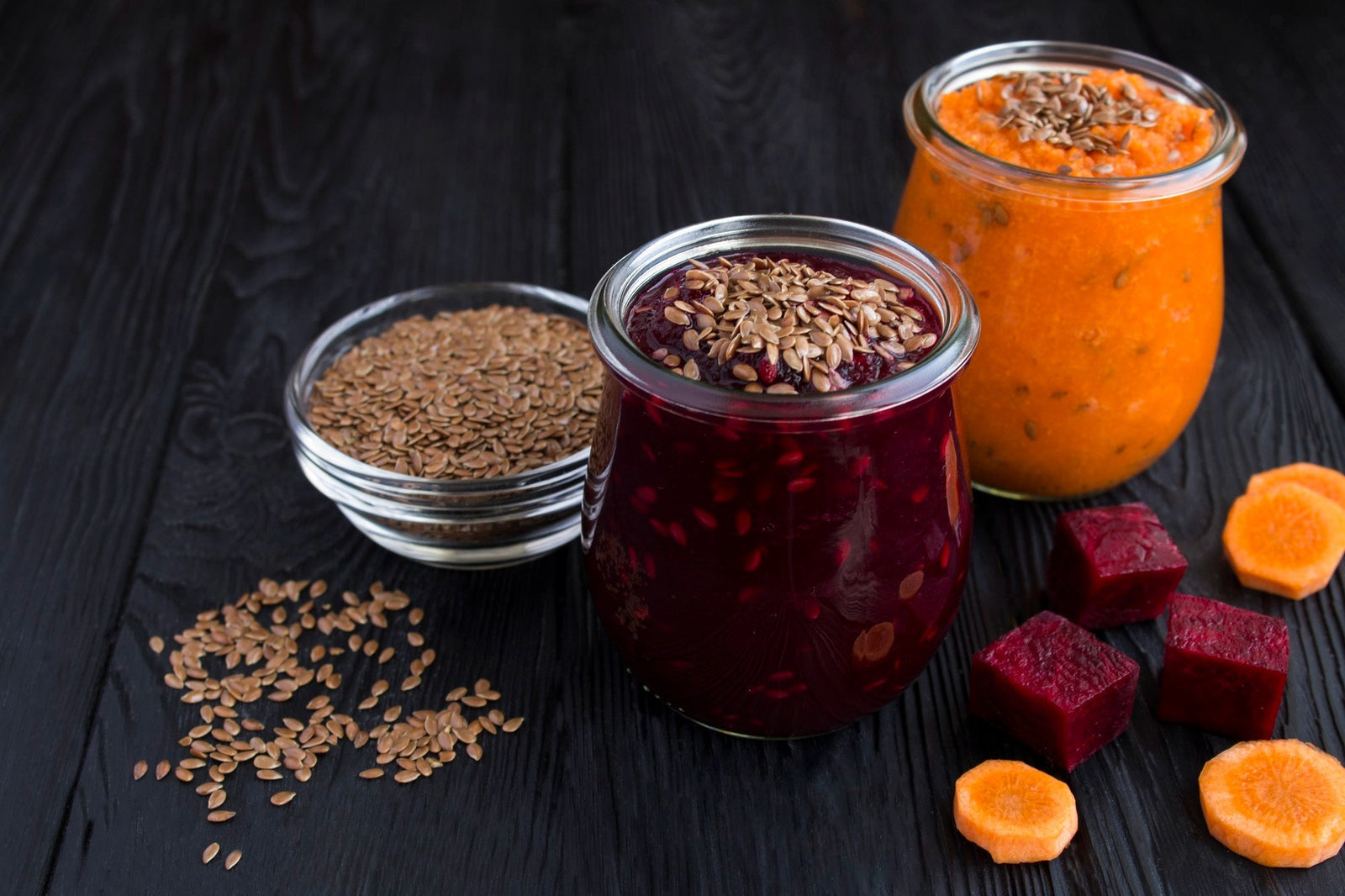
January 27, 2025 3 min read
Flaxseed, the tiny yet powerful superfood, is packed with nutrients that can support weight loss. From curbing hunger to stabilizing blood sugar, this guide dives into the science of how flaxseed can help you shed those extra pounds.

December 11, 2024 3 min read
Discover three quick and easy soup recipes featuring organic small red beans. From a classic vegetable soup to a creamy potato blend, these wholesome recipes are perfect for chilly days and busy weeknights. Packed with flavor and nutrition, these soups will warm your heart and soul this winter!

December 06, 2024 3 min read
This vibrant and nutritious Green Lentil Salad combines tender lentils with grilled chicken, fresh vegetables, and a zesty lemon dressing. Packed with protein, fiber, and essential vitamins, it’s the perfect healthy meal for any time of day.
© 2025 Be Still Farms- Real, Fine Organics.
Privacy | Terms | Refund Policy | Organic Certification
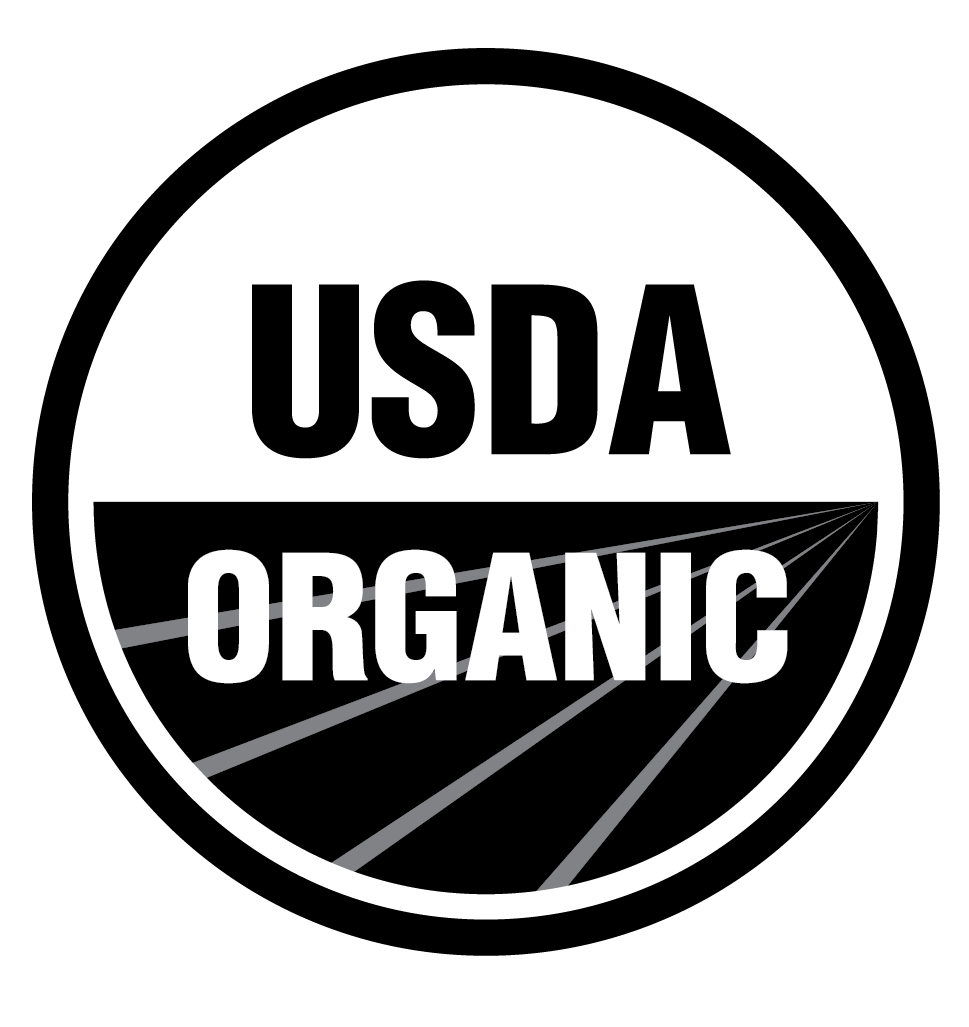
turmeric powder
March 21, 2020
Hey,
I noticed your article and read it. I just loved the way you wrote. You have given very good information. Find out more information about turmeric powder